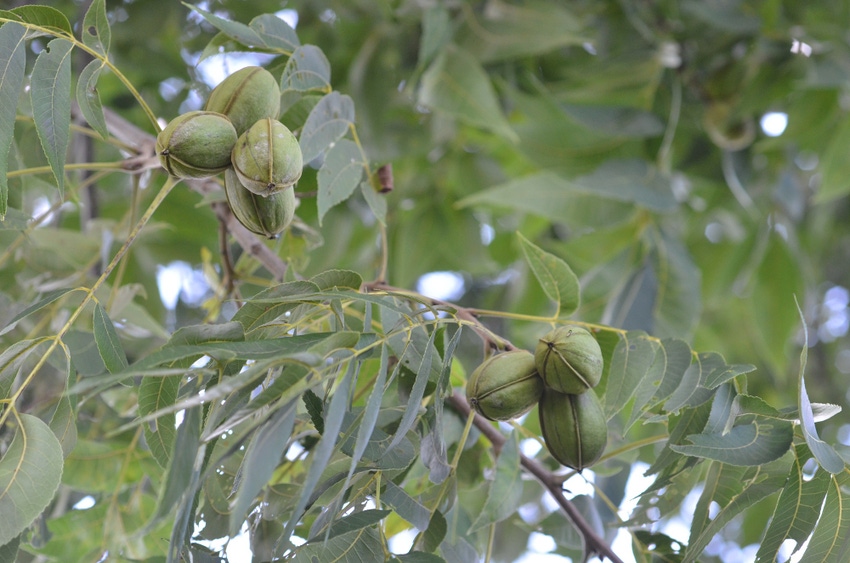August 31, 2016

Fair to good—that’s the outlook for the 2016 Texas pecan crop, which may be limited by “hit and miss” rainfall and last year’s bumper crop.
“Some spots are in really good shape while others aren’t,” says Dr. Larry Stein, AgriLife Extension horticulturist, Uvalde. “Theoretically, 2016 should be an above–average year, but it won’t be for everyone.”
Drought, disease or pest stress can contribute to reduced yields, but much of the blame for light pecan nut loads is a heavy crop the prior year, especially if trees were not managed correctly, Stein says.
“Some producers had big crops last year. It’s just kind of the way it works that if trees make a big crop one year they don’t the next year.” Still, conditions appear to be favorable for many producers, Stein said.
The widespread late-season rain event in early August arrived at a perfect time for producers, he says. Nut kernels are forming, and the rain provided nitrogen-infused moisture to feed that process. It also allowed irrigation pumps to sit idle in many areas, which saved producers money.
Stein says producers should be monitoring trees for pests and disease as most harvesting is done in mid-October.
Heavy spring rains contributed to scab infections in some areas, and Stein suspects the disease could re-emerge following the late-season rains. He voices concern about black aphids as the pests cause leaf drop, which can affect the nuts as they fill out.
Weevils also could reduce yields and quality, Stein says. Soft, moist soil allows the pests to emerge and damage nuts as they fill out.
For the latest on southwest agriculture, please check out Southwest Farm Press Daily and receive the latest news right to your inbox.
Most of the state’s pecans grow around Fort Stockton, El Paso, Brownwood and San Saba, where disease pressure is less and temperatures begin to cool earlier than in other parts of the state, Stein says.
You May Also Like




